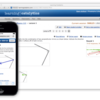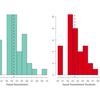Polling and, more generally, audience response technology (also called personal, student, or classroom response systems) offers a great way to make classroom lectures more interactive. At its most basic, an instructor presents a multiple-choice question to the class and students answer with a physical clicker or a Web-enabled device. The instructor can then present a histogram of the results.
If the question has a right answer, the live data allow the instructor to gauge the level of understanding of the class. Depending on the results, the instructor can choose to pause, give more explanation, or have the students discuss among themselves (peer instruction) until most of them converge towards the right answer. The technology need not restrict itself to questions with a right answer but can also be used to ask survey/opinion questions and stimulate lively debates in the classroom.
In recent years, a few trends have been observed. With more and more students now owning Web-enabled devices (laptops, smartphones, or tablets) and more and more classrooms connected to a Wi-Fi or cell phone network, several tools have moved away from physical clickers to support full Web-based solutions whereby questions can be authored directly in the cloud with a Web browser and answered through any Web-enabled device. In turn, this shift in technology has allowed instructors to go beyond multiple choice questions and expand the repertoire of questions one can ask. In addition, while the technology is still used primarily in science courses, more and more humanities courses are starting to find creative ways of exploiting it for their own pedagogical purposes.
Many response technology tools exist on the market, whether requiring hardware, running entirely on the Web, or using a combination of both. The tools officially supported in Harvard FAS are Turning Technologies and Learning Catalytics. ATG also has experience with Poll Everywhere. More information about these tools can be found on the comparison chart below as well as by accessing the corresponding specific Technology pages for these tools on this website. For any questions, simply contact ATG.
Tools Comparison
| Turning Technologies | Learning Catalytics | Poll Everywhere | |
| Pricing | Contact us | Free | Free for audiences < 40 |
| Polling software | Desktop-based | Web-based | Web-based |
| Canvas integration | Yes | No | Yes (not available in free version) |
| PowerPoint integration | Yes | No | Yes |
| Keynote integration | No | No | Yes |
| Question type supported | Standard | Rich | In-between |
| Response device supported | Turning clickers and/or any Web-enabled device | Any Web-enabled device | Any Web- and/or SMS-enabled device |



